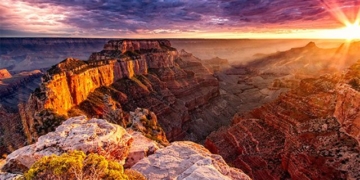Cats are one of the most widely depicted subjects in the world of art and are among the most beloved animals. Numerous works featuring cats have been created, including paintings and sculptures.
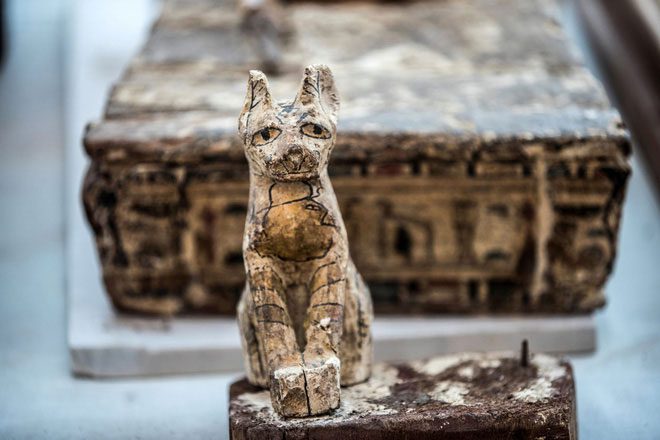
An ancient cat sculpture found in Giza (Egypt).
In the book Cats Are Art, But Spelled Wrong, author Maria Bustillos argues that our obsession with cats stems from our desire to mimic their self-expressive nature.
In this sense, humans yearn for certain qualities found in cats.
The Cat’s Troubled Fate
Throughout history, cats have not always maintained their status as beloved and revered creatures. In ancient times, Egyptian temples often featured intricately carved cats to symbolize the sun god Ra. With their keen hunting instincts, they were tasked with protecting Pharaohs in the afterlife.
In his book Cats In Art, author Desmond Morris notes that for the ancient Egyptians, cats held five distinct roles in their culture: pets, hunters, pest controllers, common metaphors in satirical stories, and even as deities.
From Egypt, cats extended their tiny claws to Rome and Greece, appearing in Norse mythology, pulling the chariot of the goddess Freja, and becoming companions to agricultural societies due to their rodent-catching abilities.
However, their status abruptly changed during the Middle Ages. As Christianity sought to undermine ancient civilizations, black cats were seen as symbols of heresy, paganism, and bad luck.
Art, closely tied to religion, often “demonized” cats. In The Last Supper, painter Domenico Ghirlandaio depicted a cat sitting behind Judas to illustrate betrayal.
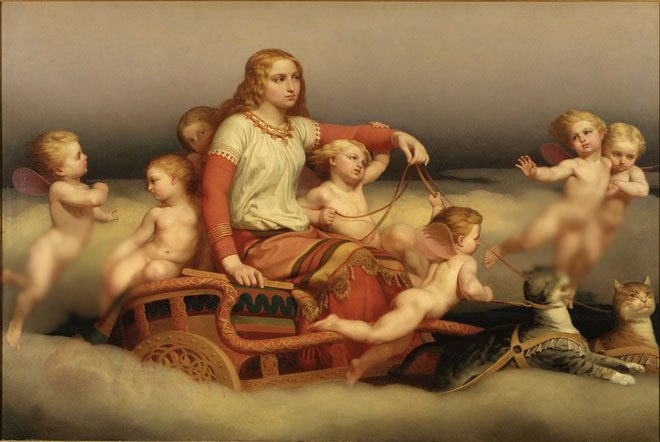
Freja Seeking Her Husband (1852) by artist Nils Blommér.
In the painting Birth of John the Baptist by Jan van Eyck, the cat may foreshadow the painful death of Saint John.
During the Renaissance, master painter Hieronymus Bosch illustrated the introduction of Eve to Adam in The Garden of Earthly Delights. Nearby, he added a cat holding a mouse, signaling the dark future that awaits humanity.
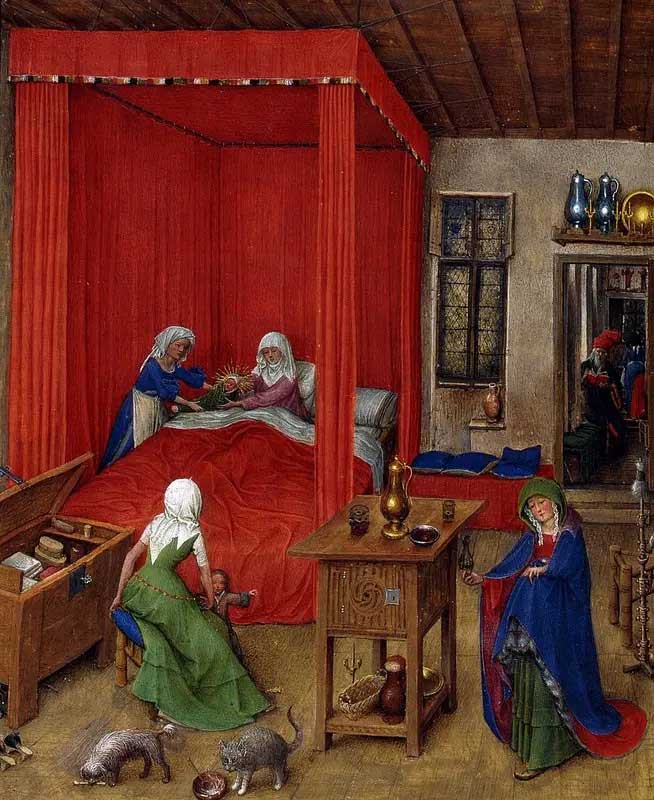
Birth of John the Baptist (1422) by Jan van Eyck – (Photo: GETTY IMAGES)
For the great master Leonardo da Vinci, cats were both a subject of scientific study and rich in aesthetic value. “Even the smallest cat is a masterpiece” – he wrote in his sketchbook filled with drawings of this captivating animal.
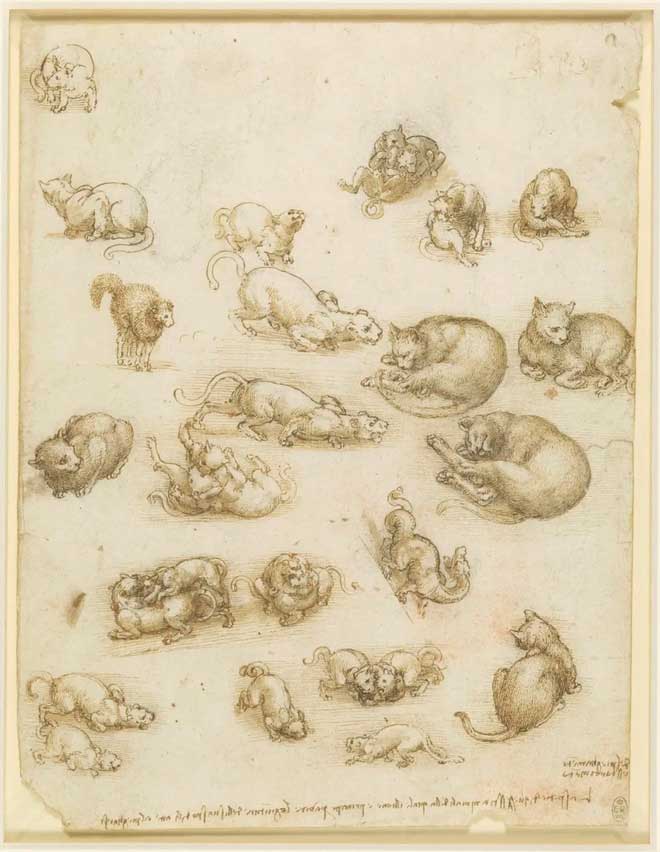
Sketches by master Leonardo da Vinci – (Photo: GETTY IMAGES).
Cats Reflect Social Will
Cats carry not only the values of their time and religion but also have the ability to reflect the artist’s voice regarding social issues.
Writing in the scientific journal Journal18, art history professor Amy Freund suggests that cats embody one of the most appealing yet radical ideals of the Enlightenment: individual freedom. This freedom could undermine monarchies and break the chains of slavery.
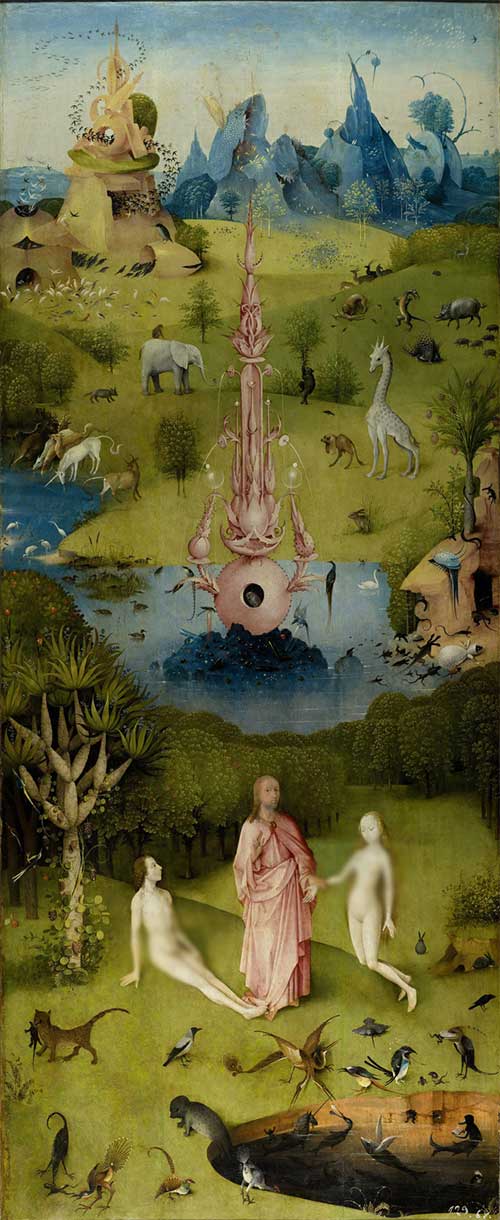
Excerpt from The Garden of Earthly Delights (1490) by Hieronymus Bosch – (Photo: GETTY IMAGES)
Amy Freund quotes philosopher Rousseau (who was also a cat lover) on this matter: “A hen will obey your command if you can make it understand. But a cat, even if it fully understands you, will still not obey.”
For this reason, Enlightenment philosophers and artists found a companion for their rebellion. Sculptor Pierre-Nicolas Beauvallet created the relief La Liberté, depicting the goddess of Freedom sitting opposite a cat.
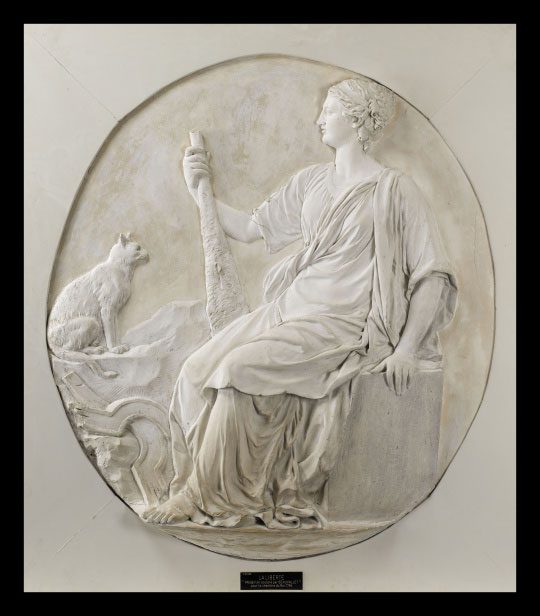
Relief La Liberté (1750) by Pierre-Nicolas Beauvallet – (Photo: Getty Images).
In the early 1900s, artists once again turned their attention to cats. French painter Théophile-Alexandre Steinlen created numerous allegorical paintings during a time when cats were seen as symbols of debauchery (especially among women).
Steinlen used his works to advocate for the working class with a modern lifestyle and to satirize the artificial norms of the Parisian bourgeoisie.
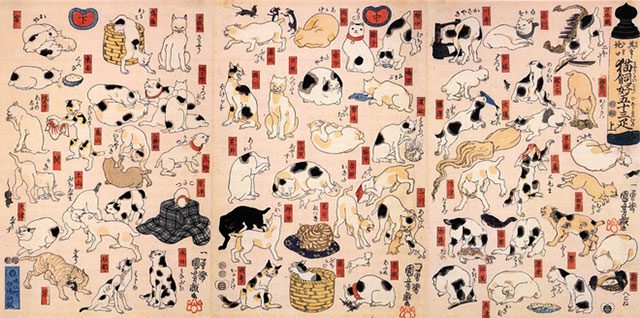
Painting Suggested As The Fifty-three Stations of the Tōkaidō (1850) by Utagawa Kuniyoshi – (Photo: GETTY IMAGES).
The anthropomorphism of cats is even more pronounced in Japan. In the early 1940s, the Tokugawa Shogunate enforced a ban on artists depicting courtesans, geishas, and kabuki performers.
To circumvent censorship, Utagawa Kuniyoshi often used cats to illustrate the artists. Each character had its own flair and personality. The cats in his prints became famous stars of the Edo period.
Today, cats no longer bear the burdens of social and religious symbolism. Consequently, their representation in art is no longer constrained or conventional. The forms of cats are depicted simply, blending into the lives of modern humans. Nevertheless, their powerful allure has never diminished.
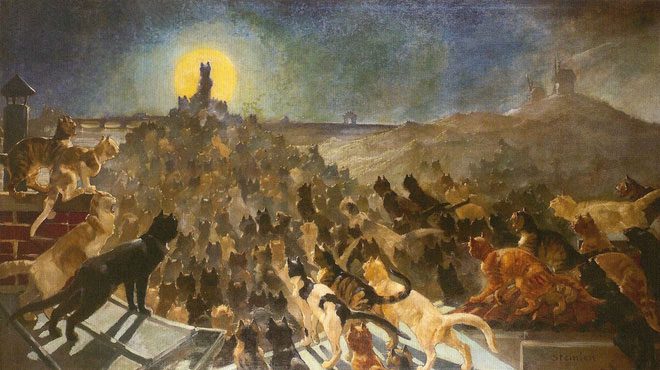
The Apotheosis Of The Cats (1890) by Théophile-Alexandre Steinlen – (Photo: GETTY IMAGES).
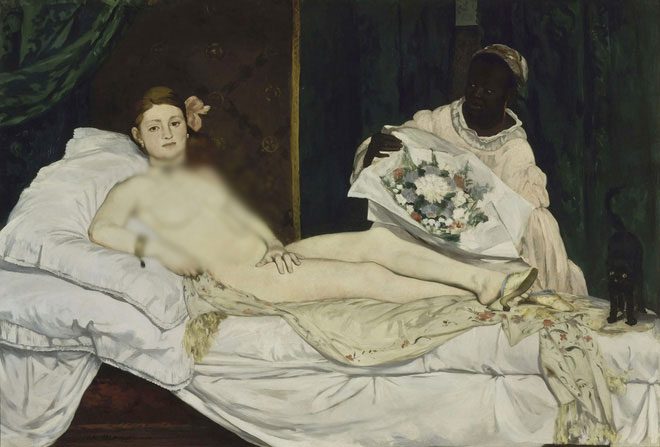
Olympia (1863) by painter Édouard Manet – (Photo: GETTY IMAGES).
The “Cat-Crazy” Nation
Japan is a “cat-crazy” nation. Since the 17th century, cats have inspired woodblock printing artisans.
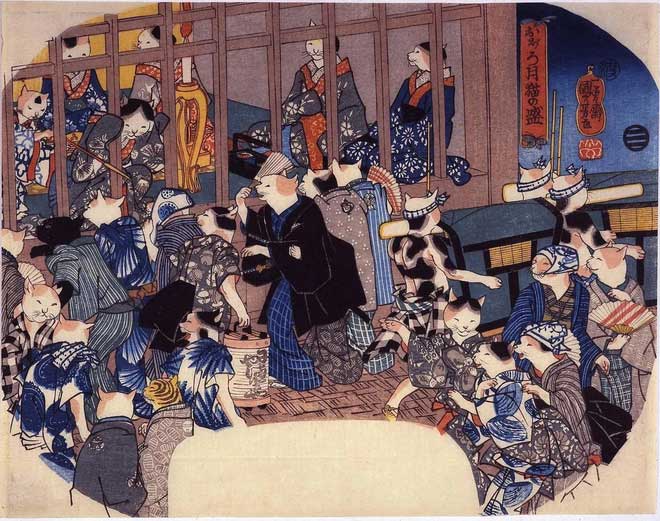
Hazy Moon cat, Sheng (1846) by Utagawa Kuniyoshi – (Photo: Getty Images).
Artist Utagawa Kuniyoshi was so obsessed with cats that most of his works featured their silhouettes.
The work Cats Suggested As The Fifty-three Stations of the Tōkaidō depicting various cat expressions has become a classic of Japan and established Utagawa’s fame.
Many of his other works such as Catfish, Four Cats in Different Poses, The Story of Nippondaemon and the Cat… are still printed on ukiyo-e woodblock prints to this day.

















































